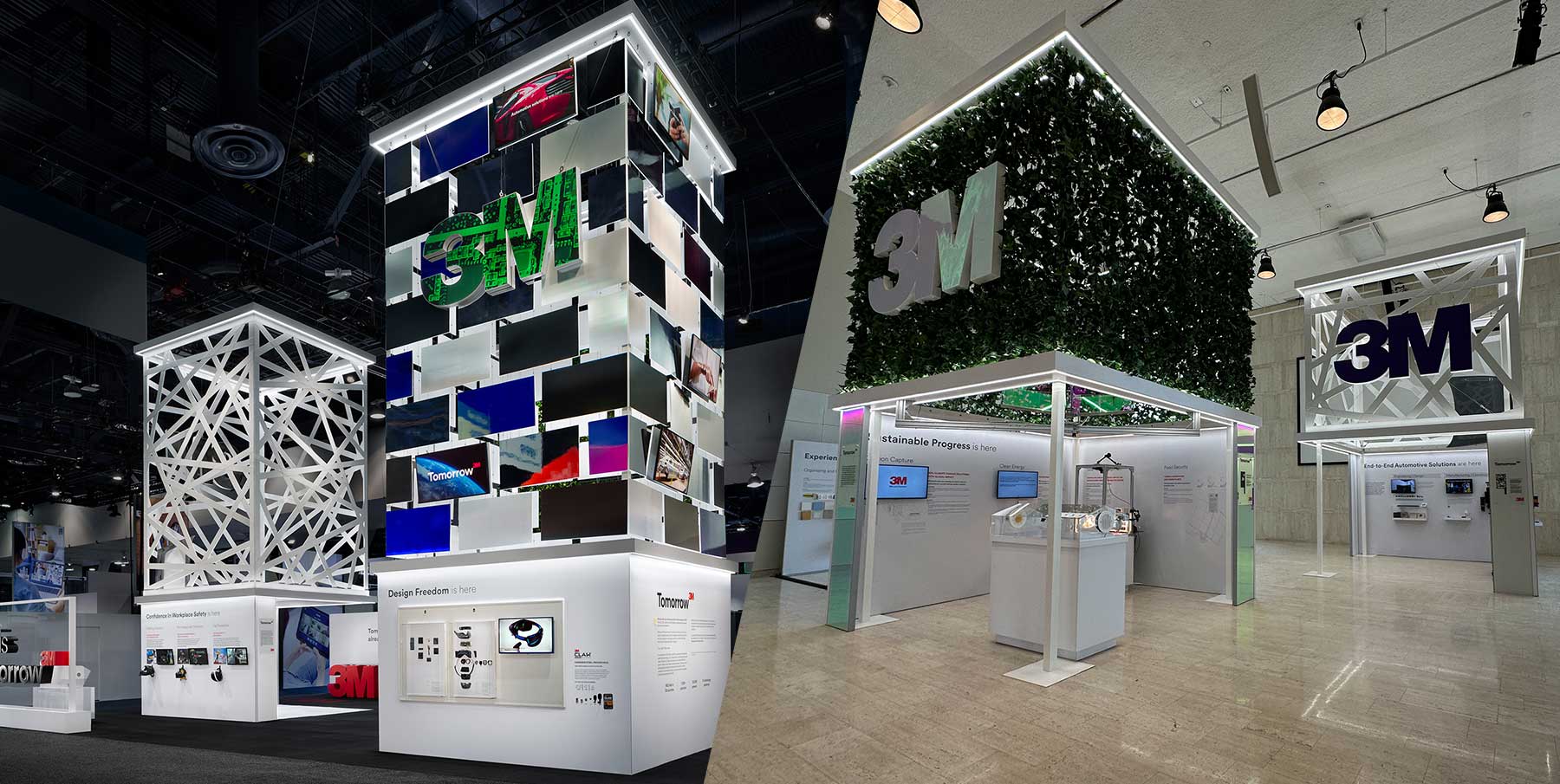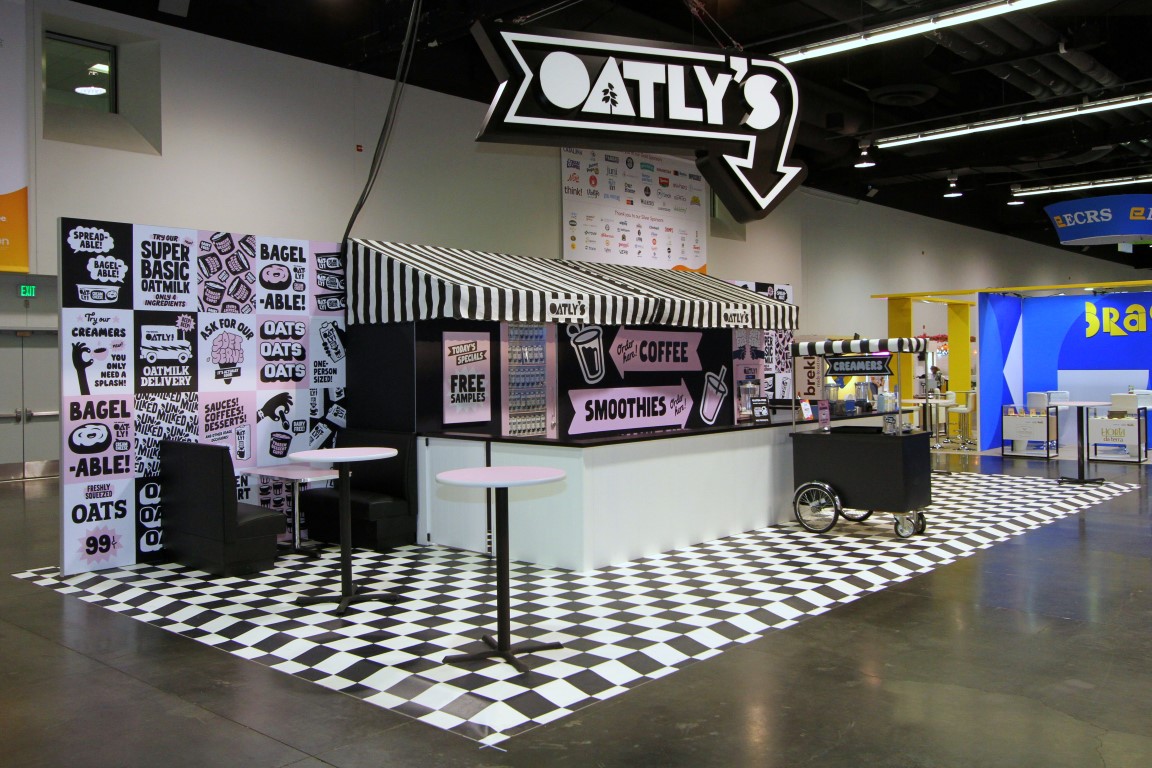Sustainability isn’t just a buzzword—it’s a business imperative. Companies are scrambling to go green in every way possible, but trade shows? They’re a tough nut to crack. In a single year, B2B trade shows pumped out a whopping 6.1 million metric tons of greenhouse gases (source). These large-scale events generate significant waste, emissions and other environmental impacts, making them a critical focal point for brands committed to green business practices. Let’s dive into some strategies that’ll make your brand shine and resonate with eco-conscious prospects and customers.
1. Determine your environmental and sustainability goals.
The first step in developing a sustainability strategy for trade shows is to define your environmental goals. What do you hope to achieve by adopting sustainable practices at these events? Are you looking to reduce waste, lower your carbon footprint, or set the standard for other companies in your industry? Your goals will guide every decision you make, from the materials you choose for exhibit builds to the partners you collaborate with to bring your trade show vision to life.
If introducing sustainability at trade shows is overwhelming, adopt a phased approach. Start by setting achievable short-term goals, such as reducing single-use plastics or sourcing eco-friendly materials for your show layouts. Over time, build on these successes to aim for more ambitious objectives, like achieving carbon neutrality or earning sustainability certifications. A realistic approach that starts small and builds to bigger targets allows your brand to make steady progress without becoming exhausted by the scope of the task.
2. Choose a partner with the right training and expertise.
True sustainability at trade shows requires more than just good intentions—it demands expertise. It’s important when you’re investing in sustainability to avoid greenwashing, or the appearance of simply saying something is environmentally friendly when it’s not. One of the most effective ways to ensure your sustainability strategy is successful is to partner with a company that has a proven track record in sustainable event management. Look for partners who hold certifications like the Events Industry Council (EIC) Sustainability Certification, which demonstrates a deep understanding of sustainable practices in the events industry. Companies that hold this certification have put their teams through extensive training and undergone external auditing to validate their expertise.
The right partner can help you navigate the complexities of sustainable exhibiting, from selecting eco-friendly materials to optimizing logistics to cut your carbon footprint. They can also provide valuable insights into industry trends and best practices, ensuring your strategy is not only effective but also innovating where possible. Choosing a partner that can help you navigate sustainable strategies is the best way to.
3. Focus on sustainable components.
The components of your trade show booth and interior builds are a critical aspect of your sustainability strategy. From the materials used in construction to the types of displays and furnishings selected, every element can be part of your effort to minimize environmental impact.
Start by selecting materials that are recyclable, biodegradable, or made from renewable resources. For example, opt for FSC-certified wood, recycled metal, or fabric made from organic cotton. These choices reduce the demand for resources, which can often be reused, or can be recycled. In addition to material selection, consider the lifecycle of your exhibit components. Can they be reused for future events? Are they durable enough to withstand multiple installations? By prioritizing longevity and reusability, you can reduce the need for new materials and decrease your overall footprint.
4. Get creative with sustainability.
Think outside the box to reduce waste and resource consumption. One innovative approach is to source used items for your exhibit layout. Repurposing existing materials not only reduces waste but also adds a unique, story-driven element to your exhibit. For instance, consider using reclaimed wood for your exhibit structure or vintage furniture for seating areas that’s thrifted and can then be donated back or used again. These elements can create a distinctive look that sets your brand apart while also showcasing your commitment to sustainability.
Sustainability can also include new methods for disposing of exhibit materials, construction waste and other elements. Instead of sending everything to a landfill post-show, explore options like donating items to local charities or schools. Often, there are specialized companies that can recycle or repurpose materials that can’t be recycled through standard channels; you just need the right relationships in place which an experienced partner will have cultivated as part of their network.
5. Consider the logistics.
Logistics play a crucial role in the trade show exhibit sustainability. The farther your materials and exhibit components have to travel, the larger your carbon footprint will be. To minimize this impact, consider sourcing materials locally or from regions close to the trade show venue. One easy way to do this is to partner with an organization that has locations in multiple regions, so items can be shipped from the nearest warehouse.
Consider the efficiency of your transportation methods. Can you consolidate shipments to reduce the number of trips? Are there opportunities to use more sustainable modes of transport, such as rail or electric vehicles? Optimizing logistics not only reduces emissions but can also lead to cost savings, making it a win-win for your brand.
Next steps for launching your sustainability strategy.
Developing and executing a sustainability strategy for trade show exhibits requires strategic planning, creative thinking, and collaboration with the right partners. By setting clear environmental goals, choosing sustainable components, and optimizing logistics, your brand can significantly reduce its environmental impact while demonstrating a strong commitment to sustainability at all levels of its strategy.
Ready to learn more about developing a sustainability strategy for your brand’s experiential marketing campaigns? Read our ebook to learn how leading brands approach this issue or contact us today to speak with a sustainability expert.






